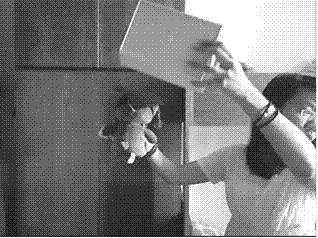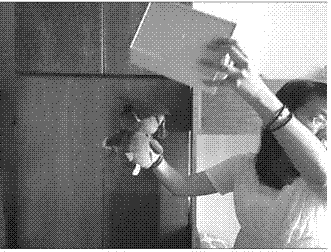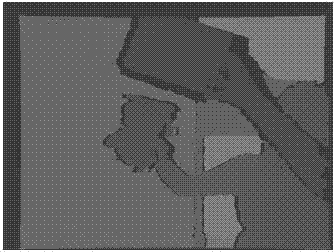Method for optimizing depth image in RGBD sequence scene flow calculation
A technology of RGB image and depth image, applied in the field of depth image optimization in RGBD sequence scene stream calculation, which can solve problems such as limitations
- Summary
- Abstract
- Description
- Claims
- Application Information
AI Technical Summary
Problems solved by technology
Method used
Image
Examples
Embodiment Construction
[0024] The present invention will be further described below in conjunction with drawings and embodiments. see Figure 1a to Figure 4 , the depth image optimization method in RGBD sequence scene flow calculation, using the bear_back image sequence to perform experiments on automatic layering and optimal segmentation of depth images:
[0025] 1) Since image scenes are usually decomposed into a small number of independent moving objects, such as Figure 1a and Figure 1b It is a bear_back image sequence with two consecutive frames of images (where: Figure 1a is the first frame image, Figure 1b is the second frame image), Figure 1c Yes Figure 1a Corresponding depth image; first set the initial layer number N=8;
[0026] 2) Calculate the optical flow between two consecutive frames of the bear_back image sequence, such as Figure 2a shown; and according to the initial layer number of the depth image corresponding to the bear_back image sequence K-means clustering to obtain ...
PUM
 Login to View More
Login to View More Abstract
Description
Claims
Application Information
 Login to View More
Login to View More - R&D
- Intellectual Property
- Life Sciences
- Materials
- Tech Scout
- Unparalleled Data Quality
- Higher Quality Content
- 60% Fewer Hallucinations
Browse by: Latest US Patents, China's latest patents, Technical Efficacy Thesaurus, Application Domain, Technology Topic, Popular Technical Reports.
© 2025 PatSnap. All rights reserved.Legal|Privacy policy|Modern Slavery Act Transparency Statement|Sitemap|About US| Contact US: help@patsnap.com



